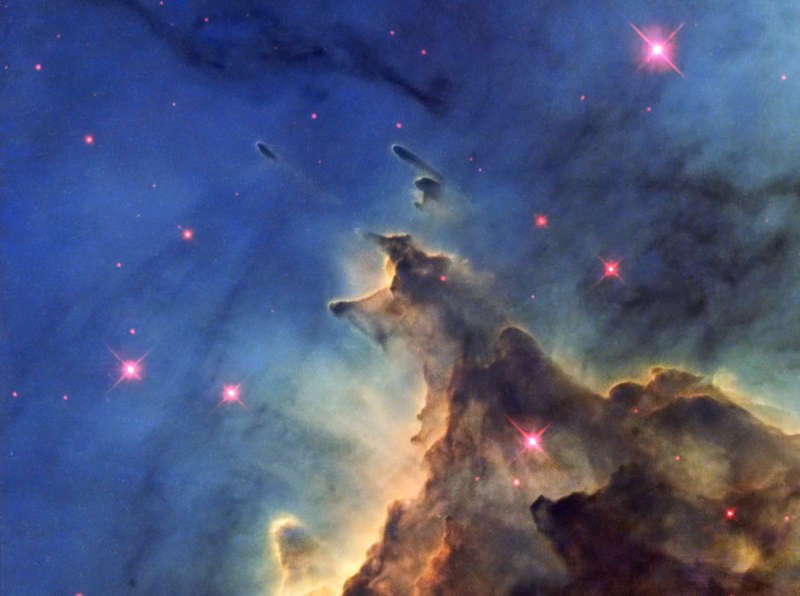
|
Explanation: It's stars versus gas mountains in NGC 2174 and the stars are winning. More precisely, the energetic light and winds from massive newly formed stars are evaporating and dispersing the dark stellar nurseries in which they formed. The structures of NGC 2174 are actually much thinner than air and only appear as mountains due to relatively small amounts of opaque interstellar dust. A lesser known sight in the nebula-rich constellation Orion, NGC 2174 can be found with binoculars near the head of the celestial hunter. About 6,400 light-years distant, the entire glowing cosmic cloud covers an area larger than the full Moon and surrounds loose open clusters of young stars. The above image from the Hubble Space Telescope shows a dense interior region which spans only about three light years while adopting a color map that portrays otherwise red hydrogen emission in green hues and emphasizes sulfur emission in red and oxygen in blue. Within a few million years, the stars will likely win out completely and the entire dust mountain will be dispersed.
|
January February March April May June July August September October November December |
| ||||||||||||||||||||||||||||||||||||||||||||||||
NASA Web Site Statements, Warnings, and Disclaimers
NASA Official: Jay Norris. Specific rights apply.
A service of: LHEA at NASA / GSFC
& Michigan Tech. U.
Based on Astronomy Picture
Of the Day
Publications with keywords: nebula - star formation - gas - dust
Publications with words: nebula - star formation - gas - dust
See also:
- APOD: 2025 December 9 B The Heart of the Soul Nebula
- APOD: 2025 August 28 B Galaxies, Stars, and Dust
- APOD: 2025 July 10 B Lynds Dark Nebula 1251
- APOD: 2025 June 23 B W5: Pillars of Star Formation
- APOD: 2025 April 28 B Gum 37 and the Southern Tadpoles
- APOD: 2025 March 26 B Star Formation in the Pacman Nebula
- APOD: 2025 March 18 B LDN 1235: The Shark Nebula
